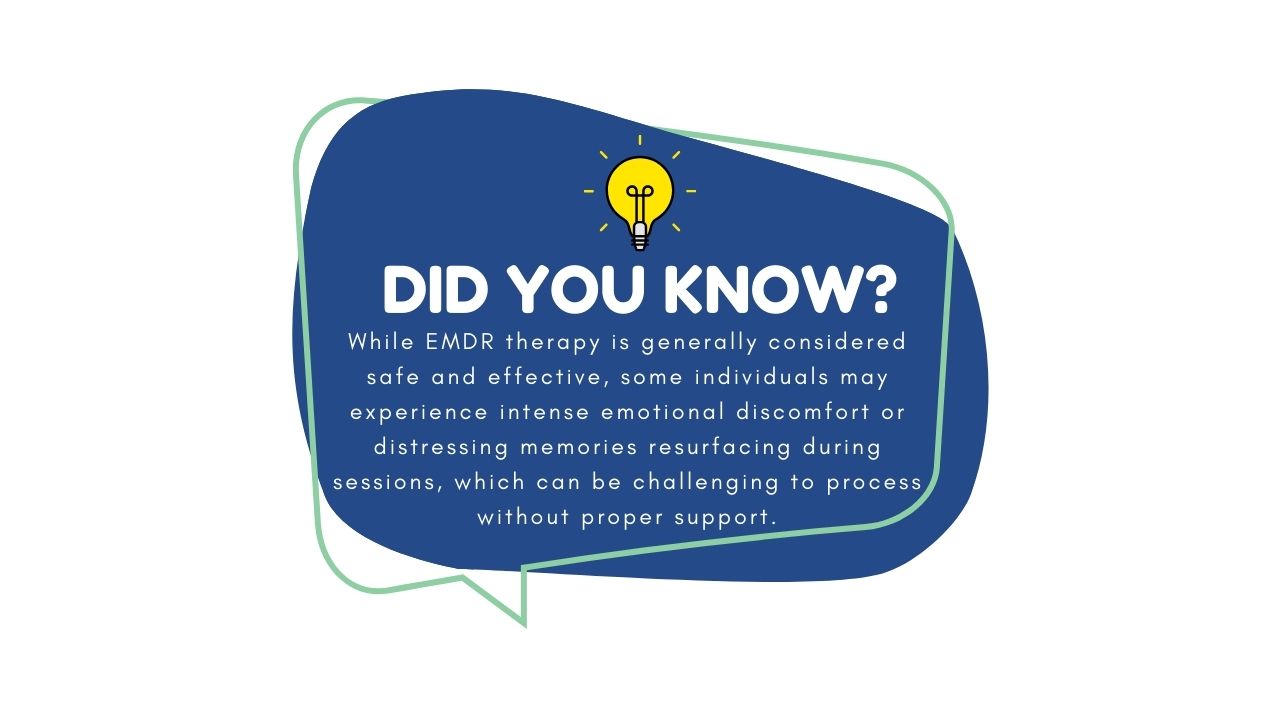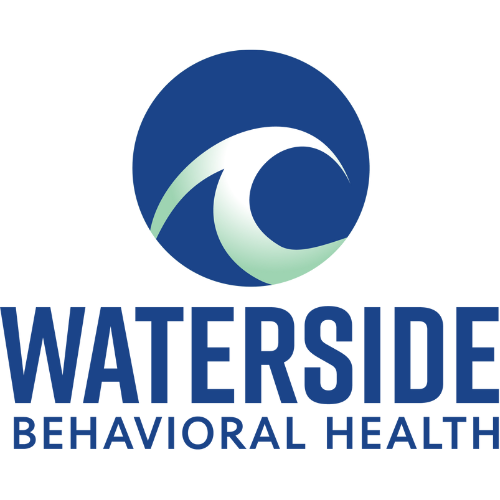Risks of EMDR therapy: Exploring Side Effects and When It May Not Be Right for You
In this post, we will explore answers to a commonly asked question: What are the risks of EMDR therapy? EMDR therapy has helped many people process trauma. However, this treatment method also comes with potential risks. Like any therapy, it’s important to understand what could go wrong before starting.
Possible side effects of EMDR therapy include temporary increases in distress, vivid dreams, and emotional sensitivity during the treatment process. These reactions happen because EMDR involves accessing and processing difficult memories.
People with certain conditions may face higher risks with EMDR. Those with severe dissociative disorders, seizure disorders, or serious heart conditions should discuss these concerns with healthcare providers before pursuing this treatment. A thorough assessment by a qualified professional can help determine if EMDR is appropriate for each individual.
To explore the evidence behind EMDR, check out our dedicated post on Is EMDR Evidence Based?
Understanding EMDR Therapy
Eye Movement Desensitization and Reprocessing (EMDR) therapy is a structured approach designed to treat trauma and other distressing life experiences. The therapy uses bilateral stimulation to help the brain process traumatic memories that have remained “stuck” in the nervous system.
Principles of EMDR Therapy
EMDR therapy is based on the Adaptive Information Processing model, which suggests that mental health problems stem from unprocessed traumatic memories. These memories remain stored with the original emotions, physical sensations, and beliefs.
During EMDR, the brain’s natural healing process is activated through bilateral stimulation. This typically involves eye movements, taps, or tones that alternate between the right and left sides of the body.
The goal is not to erase memories but to reprocess them so they become less distressing. When successful, the emotional charge diminishes, and new adaptive beliefs replace negative ones.
EMDR differs from other therapies by focusing less on the therapeutic relationship and more on the client’s internal processes.
Phases of EMDR Treatment
EMDR therapy follows a structured eight-phase protocol:
- History-taking – The therapist collects the client’s history and identifies treatment targets.
- Preparation – The client learns coping techniques and what to expect during sessions.
- Assessment – The therapist identifies a specific memory to target and its associated elements.
- Desensitization – Bilateral stimulation occurs while the client focuses on the target memory.
- Installation – Positive beliefs are strengthened to replace negative ones.
- Body scan – The client identifies any remaining physical tension.
- Closure – The session ends with the client returning to a state of emotional balance.
- Reevaluation – Progress is assessed at the beginning of subsequent sessions.
Each phase serves a specific purpose in the healing process. Treatment length varies based on the complexity of the trauma history.

Potential Risks and Side Effects
EMDR therapy can cause several unwanted effects that patients should understand before starting treatment. While many people benefit from this therapy, being aware of possible complications helps create realistic expectations.
Emotional Distress
During EMDR sessions, patients often revisit traumatic memories that can trigger intense emotions. This may include temporary increases in anxiety, sadness, or fear. Some people report feeling emotionally drained or vulnerable after sessions.
This emotional intensity is considered part of the healing process but can be uncomfortable. For some individuals, these feelings may persist between sessions, creating a temporary period of emotional instability.
Common emotional reactions include:
- Heightened anxiety or fear
- Vivid dreams or nightmares
- Mood swings
- Temporary depression
- Feelings of vulnerability
Therapists typically provide coping strategies to manage these responses, but patients should be prepared for this emotional work.
Physical Reactions
EMDR can trigger physical symptoms related to stress and emotional processing. These bodily responses often reflect the activation of the autonomic nervous system during therapy.
Some patients experience headaches, dizziness, or nausea during or after sessions. Others report physical sensations like tingling, warmth, or heaviness in different parts of their body.
Light-headedness and fatigue are also common reactions. Some people notice changes in their sleep patterns, including insomnia or excessive sleeping.
These physical reactions usually subside within hours or days after treatment. However, individuals with certain medical conditions should discuss these potential effects with their healthcare provider beforehand.
False Memories
A concerning risk of EMDR involves the potential development of false memories. During therapy, the brain’s heightened suggestibility state might lead some patients to create or alter memories unintentionally.
This risk increases if a therapist uses leading questions or suggests interpretations of events. While most EMDR practitioners are trained to avoid such suggestions, the risks of EMDR therapy still exists.
Research shows that memory is malleable and can be influenced by therapeutic techniques that encourage visualization and emotional processing. This doesn’t mean memories processed in EMDR are false, but caution is warranted.
To minimize this risk:
- Work with properly certified EMDR practitioners
- Discuss concerns about memory accuracy with your therapist
- Be aware that emotional truth and factual accuracy can sometimes differ
- Understand that memory processing is complex
Considerations for Specific Populations
EMDR therapy may affect different groups in unique ways. Safety protocols and treatment adaptations should be considered based on age, developmental stage, and trauma complexity.
Children and Adolescents
EMDR therapy requires modifications when used with younger populations. Standard EMDR protocols may be too complex for children, especially those under 8 years old.
Play-based approaches often work better than traditional bilateral stimulation methods. Therapists might use:
- Puppets or toys to represent traumatic events
- Drawing or sand tray work instead of verbal processing
- Shorter sessions with more breaks
Parental involvement is typically necessary, especially for younger children. Parents may need to be present during sessions or receive training to support home-based stabilization techniques.
Children with attention difficulties or developmental delays may struggle with the cognitive demands of EMDR. Assessment of a child’s readiness should include evaluation of their ability to self-regulate emotions and follow basic instructions.
Individuals with Complex Trauma
Complex trauma survivors often require specialized EMDR approaches. The standard 8-phase protocol may need significant modification.
Extended stabilization is typically necessary before processing traumatic memories. This phase might last months, not weeks, and include:
- Resource development and installation
- Grounding techniques
- Emotion regulation skills
Dissociative symptoms present particular challenges. Individuals with dissociative disorders may experience:
- Memory fragmentation during processing
- Increased dissociative episodes
- Difficulty maintaining dual awareness
Treatment pacing is crucial. Processing too quickly can overwhelm coping resources and cause symptom intensification. Many therapists use a “go slow to go fast” approach, processing smaller trauma fragments with frequent returns to stabilization.
Frequently Asked Questions Related to the Risks of EMDR Therapy
Many patients considering EMDR therapy have legitimate concerns about its potential risks, side effects, and appropriate usage. These questions address common worries and provide evidence-based information about safety considerations.
What are the potential side effects associated with EMDR therapy?
EMDR therapy can cause temporary discomfort for some patients. Common side effects include heightened emotions, vivid dreams, and fatigue following sessions.
Some patients report experiencing headaches, dizziness, or nausea during or after treatment. These physical symptoms typically resolve within 24-48 hours.
Mental fatigue and emotional exhaustion may occur as the brain processes traumatic memories. This is considered part of the normal healing process rather than an adverse reaction.
How long might the side effects of EMDR therapy persist after a session?
Most EMDR side effects last between a few hours and three days. The processing of traumatic memories often continues between sessions, which explains the lingering effects.
For most patients, emotional disturbances diminish significantly after 24-48 hours. However, individual responses vary based on trauma severity and personal resilience factors.
Persistent side effects lasting more than a week warrant discussion with the therapist. Extended discomfort may indicate a need to adjust the treatment approach.
Can EMDR therapy have negative effects, and are they common?
Negative effects from EMDR therapy occur in a minority of cases. Research indicates that approximately 10-20% of patients experience temporary worsening of symptoms.
Emotional flooding—feeling overwhelmed by memories or emotions—represents the most commonly reported negative effect. Proper preparation and therapist support minimize this risk.
Serious adverse reactions remain rare when EMDR is conducted by trained professionals. The therapy includes specific protocols to ensure patient safety and stability.
Are there specific conditions under which EMDR therapy is not recommended?
EMDR therapy requires caution for patients with certain eye conditions, seizure disorders, or pregnancy. These physical conditions may complicate the bilateral stimulation aspect of treatment.
Severe psychiatric conditions like active psychosis or uncontrolled bipolar disorder present contraindications. Patients experiencing acute suicidal ideation should stabilize before beginning EMDR.
Recent major surgery, heart conditions, or respiratory problems may require medical clearance. The physical stress of processing trauma can temporarily impact these conditions.
What is the controversy surrounding EMDR therapy?
Scientific debate continues regarding EMDR’s mechanism of action. Some researchers question whether eye movements offer benefits beyond standard exposure therapy techniques.
Critics point to inconsistent research results and methodological limitations in some supporting studies. The therapy’s rapid adoption before complete scientific understanding fuels ongoing skepticism.
Proponents cite numerous clinical trials demonstrating effectiveness comparable to cognitive behavioral therapy for PTSD. The disagreement reflects broader tensions in psychology between clinical observation and theoretical explanation.
Check out our dedicated article Why is EMDR so controversial in Trauma Therapy.
Is it safe to undergo EMDR therapy if I experience dissociative episodes?
EMDR therapy requires modification for patients with dissociative tendencies. Specialized protocols help these individuals maintain appropriate emotional engagement during sessions.
Therapists trained in both EMDR and dissociation can safely guide treatment. They typically implement additional grounding techniques and proceed at a slower pace.
Success depends on establishing strong emotional regulation skills before trauma processing begins. The therapist should conduct thorough assessment and preparation phases to ensure safety.
Can EMDR Therapy be used in substance abuse therapy?
EMDR therapy is primarily used for trauma. However, many people with substance abuse disorder have suffered from traumatic events. In those cases, EMDR may be used in addiction treatment.




